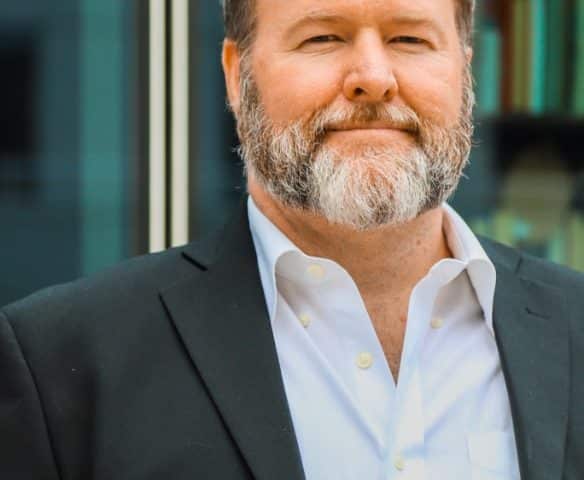New bootcamp wants to start 1,700 companies a day
July 11, 2020
Red, yellow, green: Can you assess your team in five minutes?
July 19, 2020By Verne Harnish
Leaders are readers. Richard “Doc” Haydock, CFO and COO of PulsePoint, a programmatic ad exchange company, is among them.
Not long after PulsePoint was formed by the merger of two digital media firms in 2011, Haydock started a book club, which anyone in the company could join, to make reading part of its culture. Members would read books he recommended and discuss them—at least in theory.
There was one problem: Few were actually reading the books. “We found it hard to get traction,” Haydock says.
Crowdsourcing a reading list
Haydock didn’t give up on the idea. When the company shifted its focus to digital health three years ago, he restarted the club as the PulsePoint Book Challenge.
This time, he asked team members to suggest the titles, instead of coming up with them himself, and to rate them from one to 10, with 10 being the best. “We encourage people to be the first person to submit a book,” says Haydock. “We wanted to make sure we weren’t keeping it to a small pool of books.”
He highlights the 12 highest-rated, peer-recommended books—six general business and self-improvement books and six on health—and sends this reading list in a Google sheet, to the participants via email. Generally 20 to 25 team members participate at any given time.
Aware that many team members don’t have as much time as they would like to read paper or digital books, Haydock has encouraged team members to listen to audiobooks. He recommends they use OverDrive, a site that allows readers to access audiobooks and ebooks from different library systems for free.“We’ll say, ‘You’re traveling to the office everyday. Do it on your commute,’” he says.
PulsePoint has also formed a private Goodreads group to discuss the books, finding that some team members are motivated by the chance to chat about a book they enjoy. “Instead of mandating a very specific way of doing something, we try to keep it relatively informal, so we can get engagement,” says Haydock.
Gamifying learning
To inspire PulsePoint’s team to read more, Haydock brought gamification to the club. He tracks everyone’s progress on a virtual “leaderboard” – also a Google sheet –and, once someone has read all 12 books, notifies all of the members. So far, team members have read 280 unique books.
To up the ante, Haydock also shares the name of team members who have read the most books in his weekly e-mails. Gareth Shaw, senior vice president of operations, tops the list, after Haydock, having read more than 100 books, and has implemented many of the ideas in the books at the company. “He takes onboard all of the improvements,” says Haydock. “He’s a big student of Scaling Up: Mastering the Rockefeller Habits and the different tools we use.”
The leadership team, in turn, has encouraged employees throughout the company to read Scaling Up, so they understand the concepts PulsePoint is implementing. Its leadership team attends our Scaling Up Summits, and this allows others on the team to deepen their knowledge, as well. “They say ‘Now I get it!’” says Haydock. “We definitely see the effects of that.”
Learning by osmosis
Now that the company has 120 employees in New York, San Francisco and London and revenue just south of $100 million, the shared reading list has become very important to keeping the team on the same page, so to speak. Though not everyone in the company is reading the books, the ideas tend to spread through the team by osmosis.
Haydock has noticed some team members become more aligned with the company’s objectives after reading The One Thing by Gary Keller – recommended by the company’s coach Richard Manders, co-founder of FreeScale Coaching Systems in Somerville, Mass. “That’s a good book around focus,” he says.
He has also observed team members applying the techniques from Radical Candor by Kim Scott, in meetings–and applies them himself. “We actually make reference to it,” he says. “It is easier to say ‘I’m going to give you some feedback. Remember what the book says about caring personally about people and giving direct feedback?’ It helps to put it into context.”
Another book that the team frequently references is The Great Game of Business by Jack Stack. “When I’m presenting numbers, ‘I’ll say, ‘I’m trying to be transparent. If you want to know more, you can read the book,’” says Haydock.
Some books have deepened the team’s subject-matter expertise. One book that has made the list, Prediction Machines by Ajay Agarwal, Joshua Gans and Avi Goldfarb, gave many on the team a new way to think about artificial intelligence—which has been particularly useful, given that the company’s technology relies on natural language processing, neural networks and deep learning. “It’s hard to come to grips with AI,” says Haydock. “That book has a great way of framing it.”
A living document
To keep track of the reading list as it changes in real time, Haydock uses Google sheets. He shares the reading list and updates in his weekly email. “If you send out a weekly email, people who are reluctant say, ‘Maybe I’ll try it out,’” he says.
In case you are looking for ideas for your own book club, this is PulsePoint’s current list of general business books:
- Homo Deusby Yuval by Noah Harari
- The One Thing by Gary Keller
- Radical Candor by Kim Scott
- Sapiens by Yuval Noah Harari
- Becomingby Michelle Obama
- Scaling Up: Mastering the Rockefeller Habits 2.0 by Verne Harnish
These are the health books:
- Why We Sleep by Matthew Walker
- Bottle of Lies by Katherine Eban
- The Drug Hunters by Donald R. Kirsch
- Black Box Thinking by Matthew Syed
- Bad Blood by John Carreyrou
- Bad Pharma by Ben Goldacre.
Reading isn’t just a way to reinforce PulsePoint’s internal culture. It is a bridge to connecting with other companies, too. Currently, PulsePoint is working closely with a big pharma company. When Haydock discovered the company was also running a reading challenge and had posted a blog about it, he asked for its reading list. Now his team is digging into some of the same books.
The goal, he says, is to find common ground as the two companies deepen their relationship. “That was definitely our intention,” Haydock says. It’s a great way to keep a partnership aligned.




